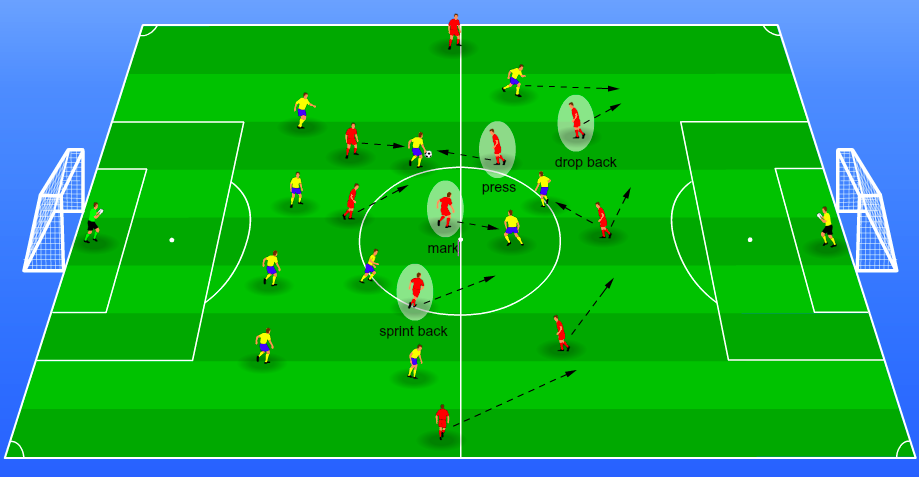Six individual football actions in the defensive transition

Moments of possession usually interchange so quickly between teams that most matches are a chain of transition moments. A good game plan in the attacking and defensive phase of the game are not enough, players are also looking for guidance in the disorganization in transition. Which options do players have in the defensive phase?
A trend has been the concept of counterpressing or in other words the ‘five-seconds rule’, heavily focusing on winning the ball back as soon as possible. But not even the best counterpressing teams in the world haunt the ball with all then field players because they’ll easily find themselves exposed at the back. (The Dutch national team in 1974 might be the only exception.) Obviously, there can be a strategy on a team level, but every individual player should always make a decision based on the specific situation that occurs.
Defensive transition
- Press the ball carrier. Reduce the time and space an opponent has by pressing him and forcing him back or, even better, winning possession.
- Mark an opponent. Not only the ball carrier can be a direct threat, but also his teammates. By marking an opponent closely, he won’t be able to contribute.
- Block a passing lane. Another very effective way of limiting options for the ball carrier is by blocking passing lanes towards the best options he has available.
- Sprint back. In situations near the ball, one of the three options above is preferred. For players further away from the ball, sprinting back is a good alternative.
- Drop back. In counter attacks, opponents mostly take advantage of the space in behind the defense. By dropping back, especially when there is no one pressing the ball carrier, reduces this space.
- Make a ‘professional’ foul. Obviously, we’d never promote any football action which could injure an opponent. But debilerately making an innocent foul could stop a promising counter attack in exchange for a yellow card.
Fast
Every situation is different, both for the team and the individual players. The playing style of the team and the individual qualities of the players, combined with the situation in the game, determines the ‘right’ football action. A common denominator is the speed of them. Every of the six possible transition actions should be performed fast.
To accompany players in this process, it is very important to provide them with training drills that offer those six options to apply. Only this way, they can improve their defensive transition skills in game-realistic scenarios.
In our drills database, you’ll easily find the most suitable defensive transition drills in the search menu. You can also select the type of drill, the number of players and the age group you are working with.
